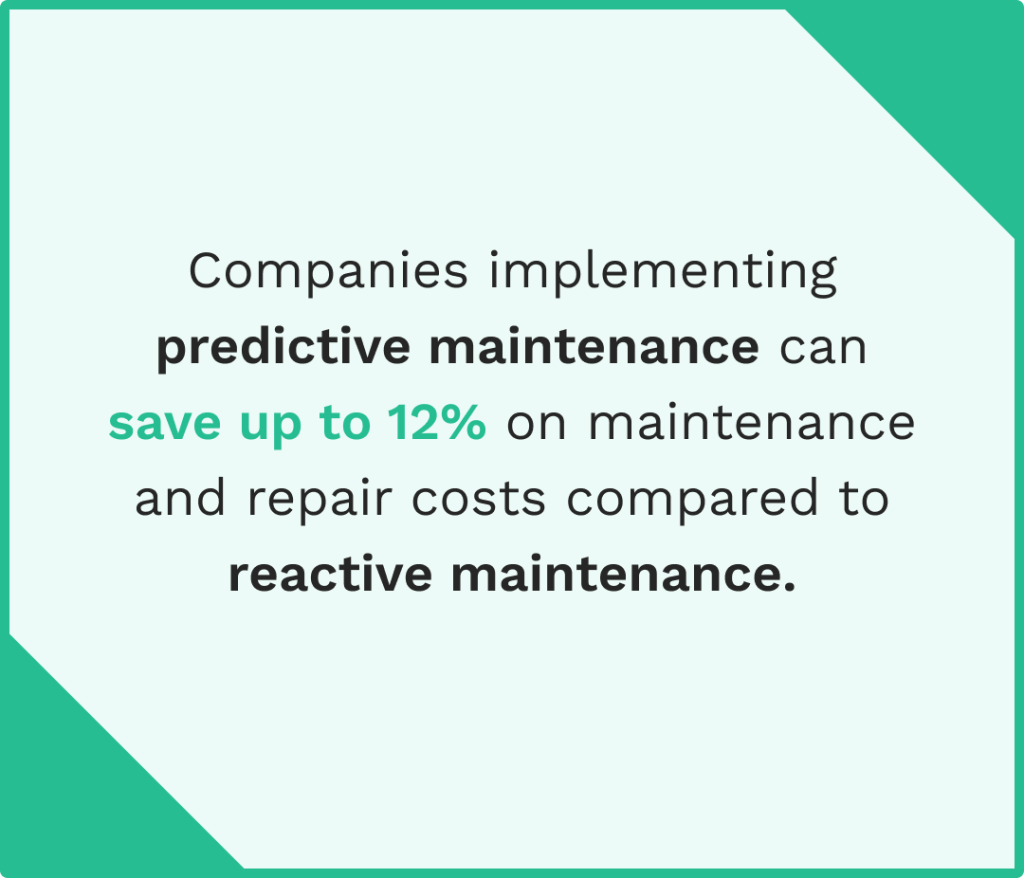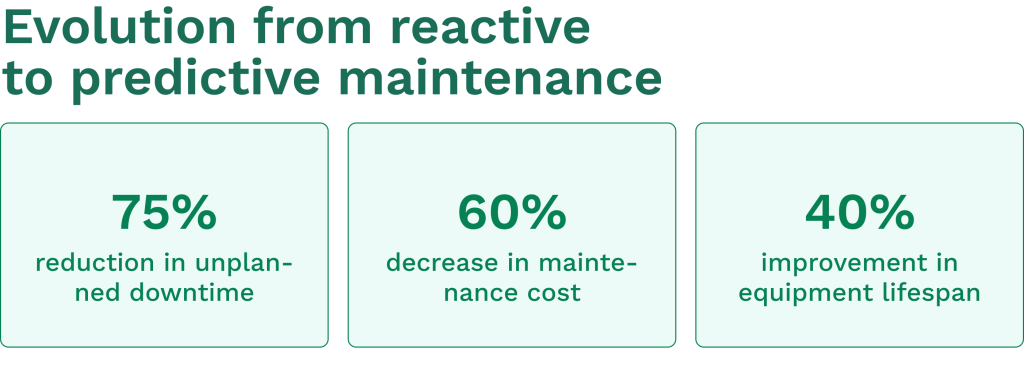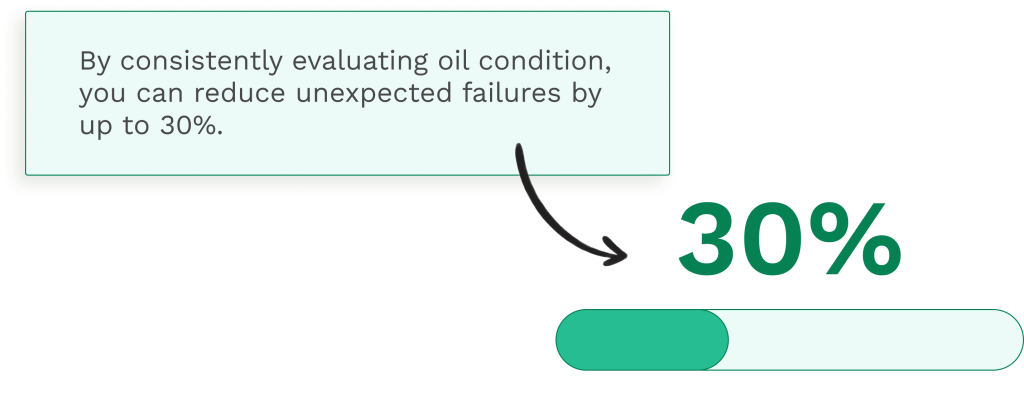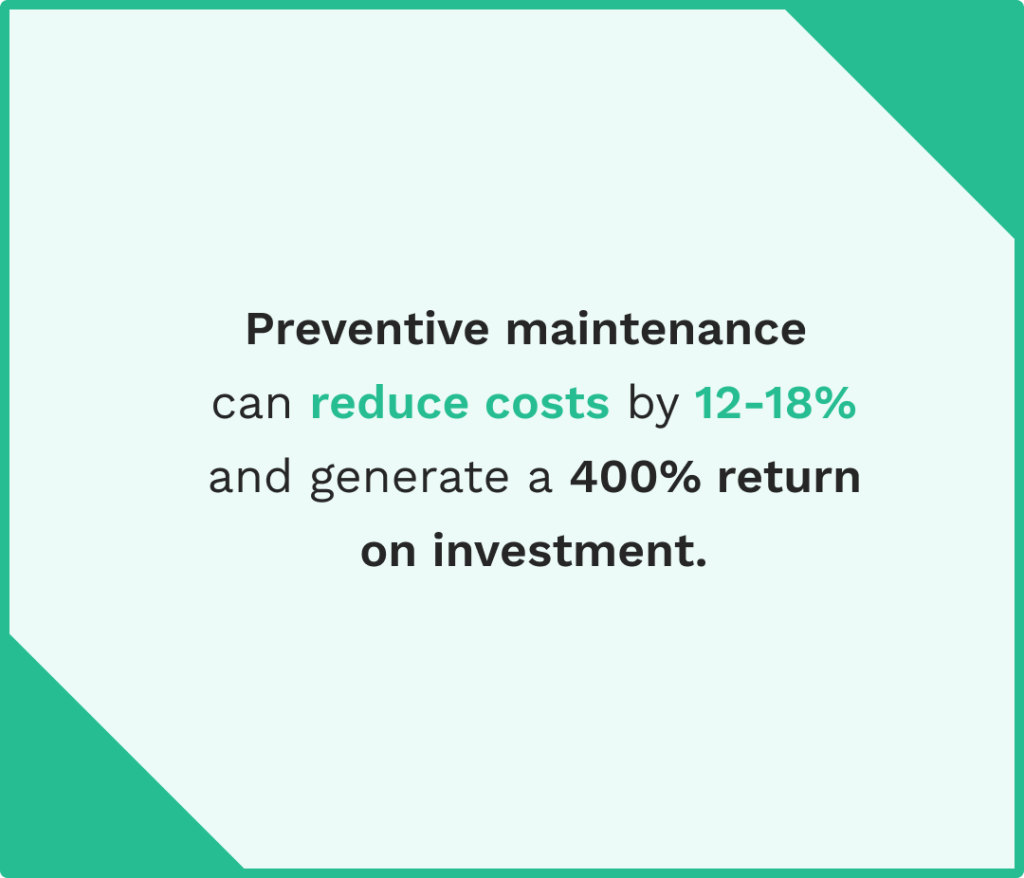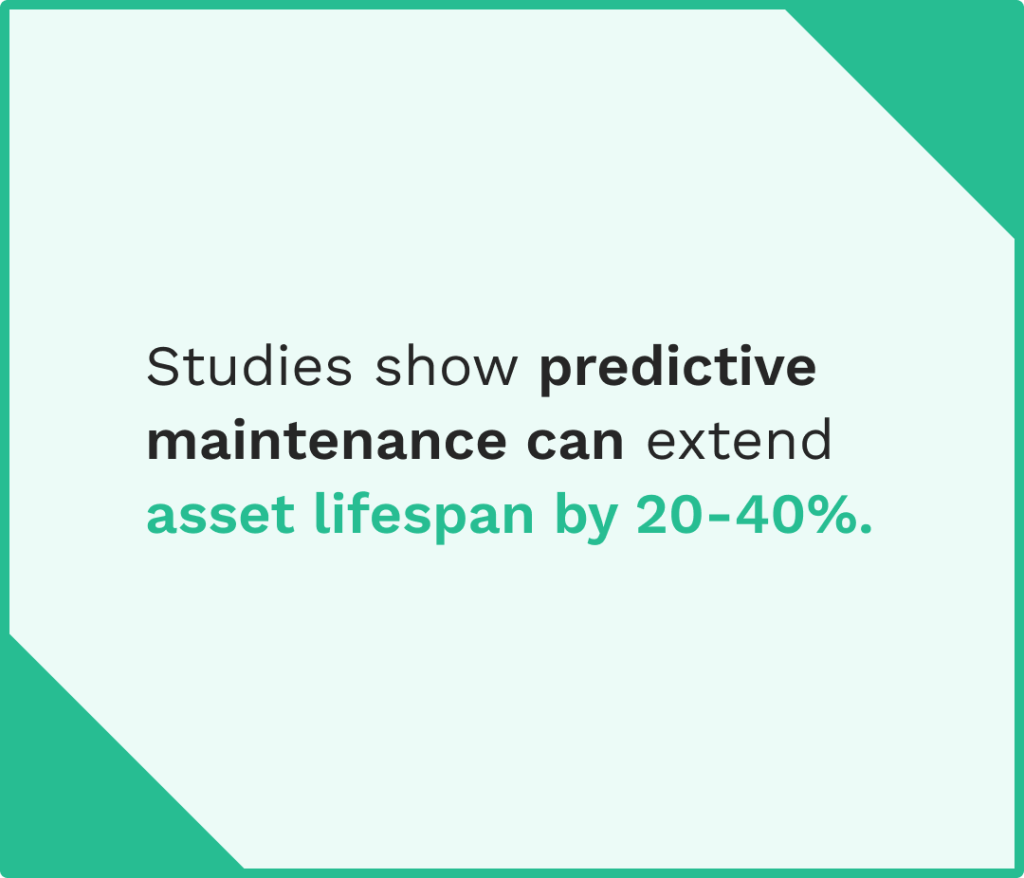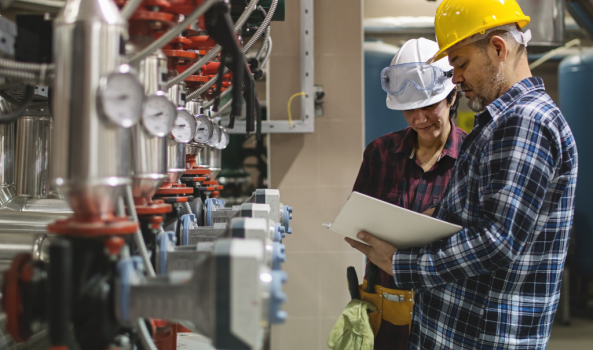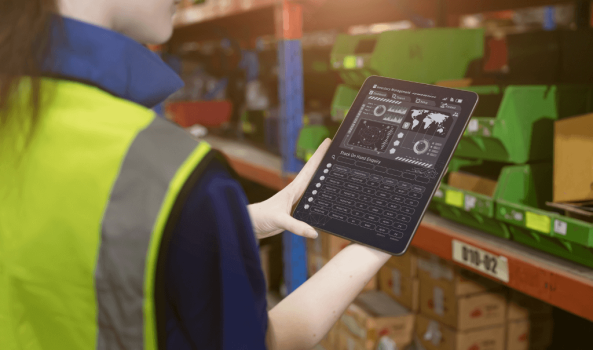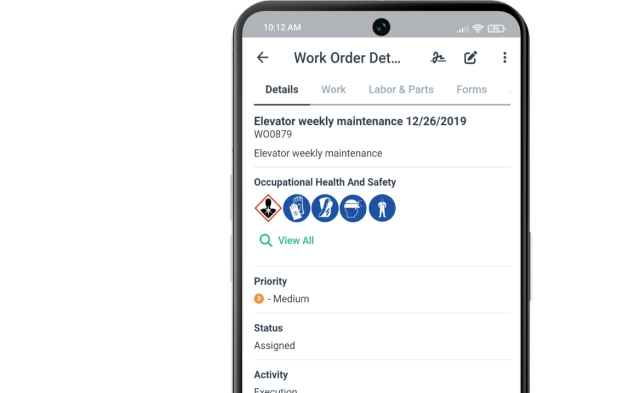Get a Free WorkTrek Demo
Let's show you how WorkTrek can help you optimize your maintenance operation.
Try for freeKey Takeaways
- Preventive maintenance uses scheduled intervals while predictive maintenance relies on real-time equipment condition data
- Preventive maintenance works best for simple equipment and predictive maintenance suits critical or high-value assets
- Most companies benefit from combining both strategies rather than choosing just one approach
Equipment maintenance keeps businesses running, but choosing the wrong approach can waste resources.
Many companies struggle to decide between fixing things on a schedule or waiting for data to tell them when maintenance is needed.
This is where predictive and preventive maintenance come in.
The main difference is that Preventive maintenance follows fixed schedules based on time or usage. In contrast, predictive maintenance uses real-time data and sensors to determine when equipment actually needs attention.
This difference affects everything from maintenance costs to the equipment lifespan.
Understanding Preventive and Predictive Maintenance
Both preventive and predictive maintenance strategies are proactive maintenance strategies. They are designed to help organizations prevent equipment from breaking down.
The key difference lies in timing and data usage for scheduling maintenance activities.
Definition of Preventive Maintenance
Preventive maintenance uses regular schedules to maintain equipment at set intervals.
This maintenance strategy follows a set of predetermined timeframes. That could be either calendar dates, usage hours, or historical data.
There are three major types of preventive maintenance:
- Usage-based maintenance – Schedules work based on equipment usage metrics
- Time-based maintenance – Sets specific calendar intervals for maintenance tasks
- Condition-based maintenance – Plans work around asset wear patterns
Maintenance technicians use checklists during preventive maintenance visits.
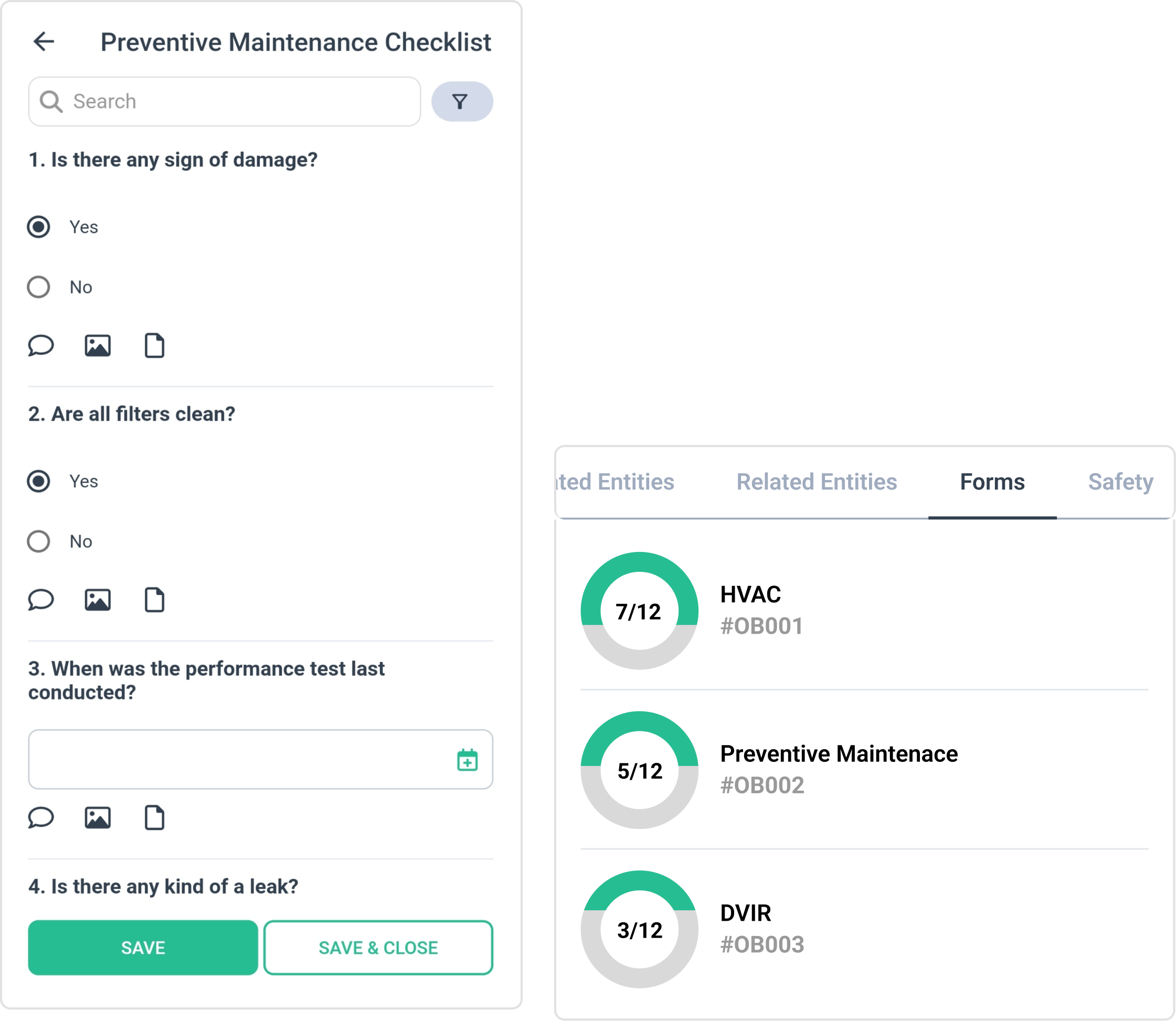
These lists can include:
- Cleaning
- Adjustments
- Part replacements
- Inspections
One good practice is to minimize unplanned downtime and schedule routine maintenance in advance.
At times, preventive maintenance can lead to over-maintenance or under-maintenance. This can result in increased labor and material costs.
For example, equipment might receive service when it is not needed, or problems might develop between scheduled visits.
Definition of Predictive Maintenance
Predictive maintenance, on the other hand, utilizes real-time data to monitor asset conditions and forecast when equipment is likely to fail.
This is done by using sensors that continuously collect information about machine performance.
Predictive maintenance also uses a number of advanced technologies. They include:
- Artificial intelligence analyzes patterns in equipment data
- Machine learning algorithms predict future failures
- Internet of Things (IoT) sensors monitor equipment conditions
- Enterprise asset management software processes maintenance data
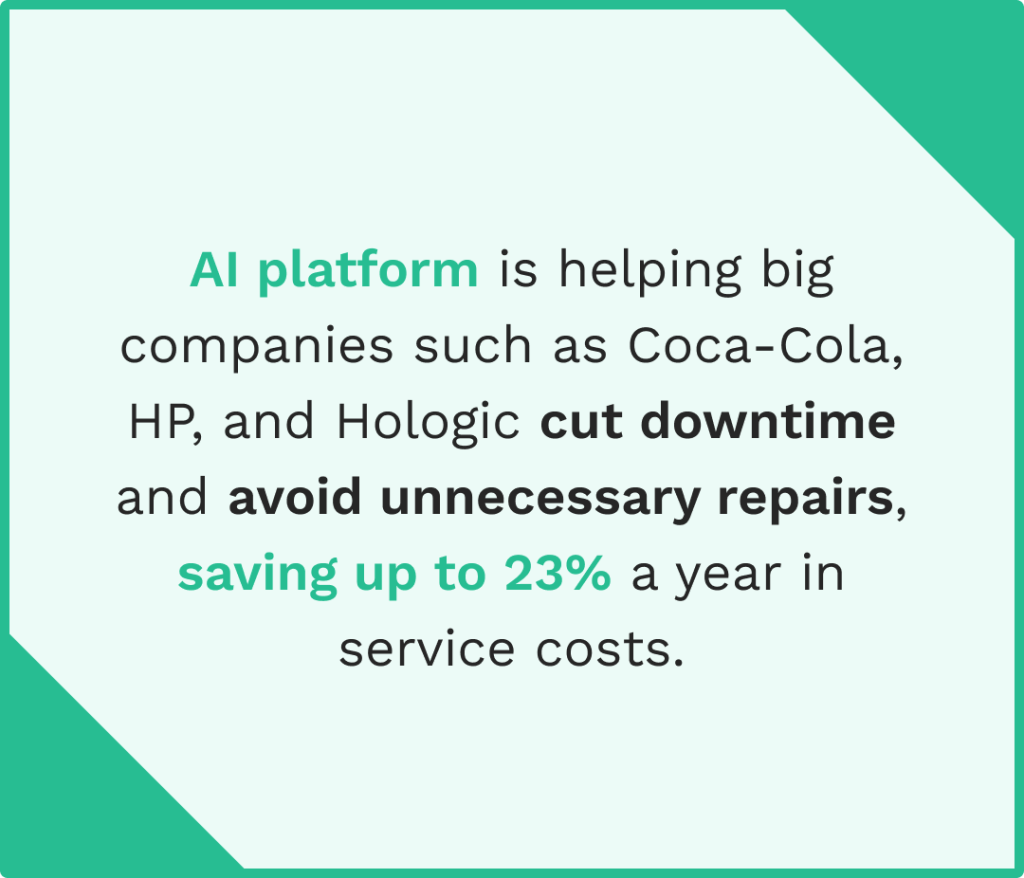
There are also various monitoring techniques to identify equipment problems before they cause failures.
One example is temperature sensors that can detect overheating components.
Another example is vibration analysis that can automatically identify misaligned parts. Sound monitoring is designed to pick up unusual noises that humans cannot hear. Oil analysis can reveal contamination or degradation in lubricants.
The good news is that one recent study shows that predictive maintenance can reduce downtime by 35-50% compared to other maintenance strategies. Predictive maintenance can also increase equipment lifespan by 20-40%.
Overview of Maintenance Strategies
One approach that is popular with a number of maintenance organizations is combining multiple maintenance strategies.
The choice depends on the importance of the asset, replacement costs, and the impact of failure.
Reactive maintenance works best for equipment with predictable failure patterns. It suits assets where downtime impact remains relatively low.
Predictive maintenance benefits high-value, critical equipment. The strategy requires substantial data collection and modern infrastructure to implement effectively.
Before choosing either of the strategies, consider training requirements.
Predictive maintenance is more complex and demands specialized skills for data interpretation and system management.
Also, consider your budget constraints. In the short term, preventive maintenance can cost less to implement than predictive systems.
Key Differences Between Preventive and Predictive Maintenance
So, what you might be asking is the main difference?
Preventive and predictive maintenance differ primarily in how they schedule work, utilize technology, and trigger maintenance actions.
Scheduling Methods
Preventive maintenance is a maintenance practice that follows a fixed schedule based on calendar dates or usage hours.
Maintenance teams perform tasks every 30 days, 90 days, or after specific operating hours, regardless of equipment condition.
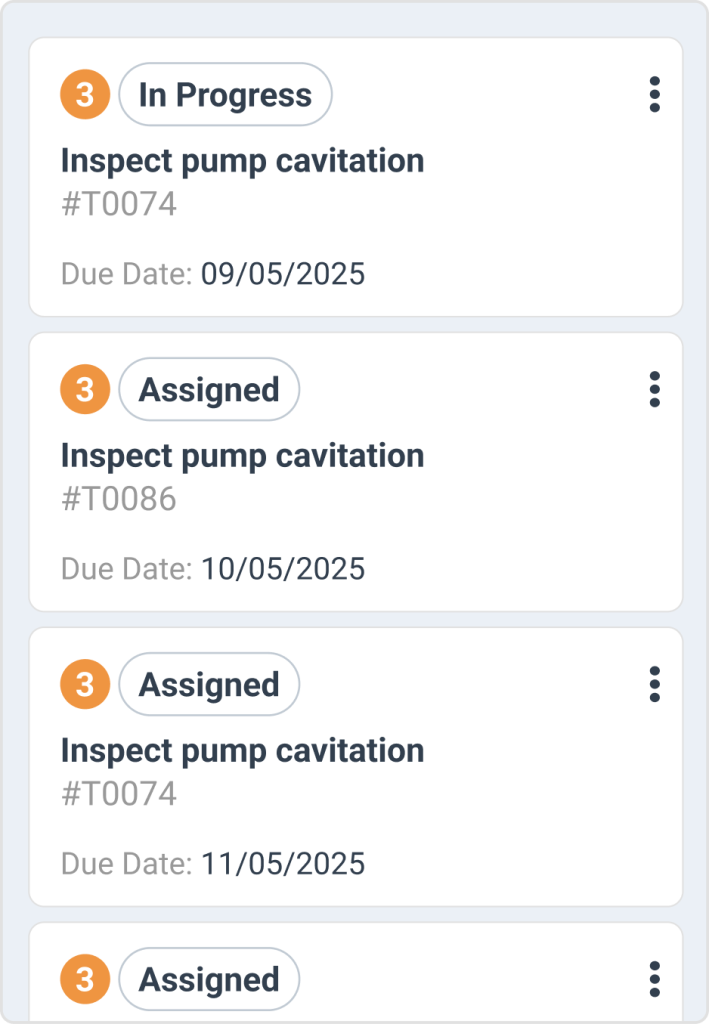
This approach treats all equipment uniformly.
For example, a bearing gets lubricated every month whether it needs it or not. An air filter gets replaced every quarter, even if it’s still clean.
Predictive maintenance scheduling depends entirely on equipment condition rather than predetermined intervals.
Work orders are generated only when data shows potential problems.
Maintenance planning can be more flexible with predictive methods. Teams can focus their time on equipment that actually needs work instead of following rigid schedules.
Technology and Data Requirements
Preventive maintenance requires basic tools like calendars, checklists, and simple tracking systems. Most organizations can implement preventive programs with existing resources and minimal technology investment.

While teams typically use spreadsheets or basic maintenance software to track when tasks were completed, implementing a full-featured CMMS like WorkTrek can streamline the process.
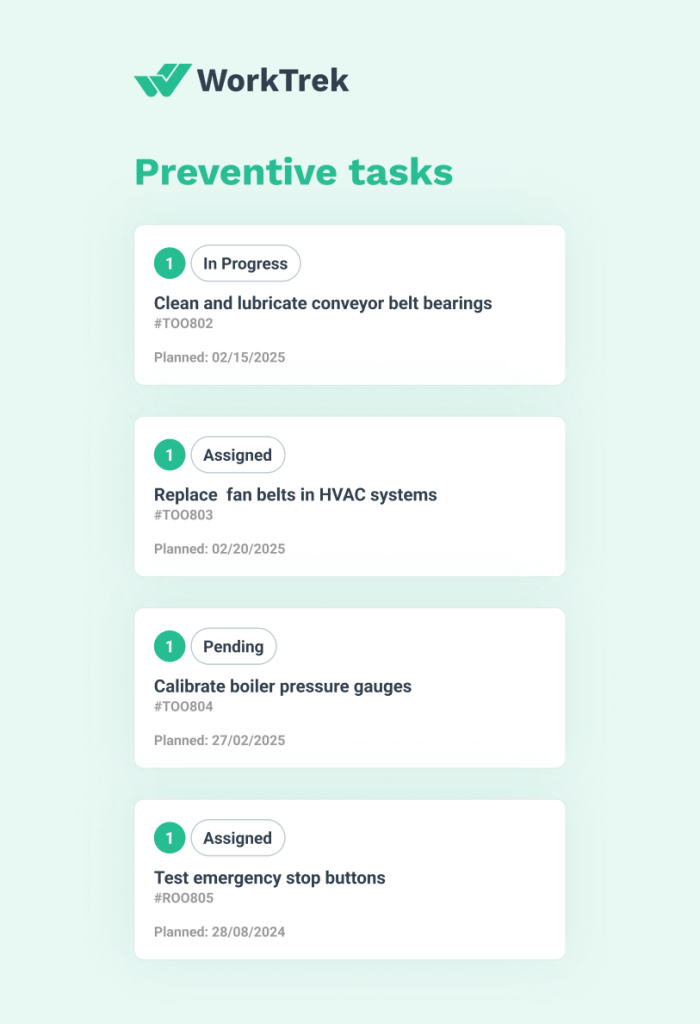
Predictive maintenance also works in conjunction with a CMMS, but it also requires advanced technology, such as sensor data, IoT devices, and analytical software.
Wireless vibration sensors continuously monitor equipment, collecting data on temperature and movement.
Machine learning algorithms analyze this data to identify patterns and predict failures. The technology processes thousands of data points to determine when maintenance is truly needed.
Triggering Maintenance Tasks
Preventive maintenance tasks get triggered by time or usage milestones. When the calendar reaches the scheduled date, maintenance occurs automatically, regardless of whether the equipment shows any problems or not.
Usage-based triggers include operating hours, production cycles, or miles driven. A truck gets serviced every 5,000 miles regardless of how it’s running.
Predictive maintenance triggers originate from actual equipment condition data that reveals anomalies or degradation.
Vibration patterns, temperature changes, or oil analysis results indicate when work is needed.
Real-time monitoring means problems get detected immediately rather than waiting for the next scheduled inspection. Equipment health determines the timing, rather than arbitrary dates.
The predictive approach prevents both unnecessary maintenance and unexpected failures by responding to the actual needs of the equipment.
Benefits and Limitations of Each Approach
Both maintenance strategies offer advantages in managing asset performance and controlling costs.
Preventive maintenance offers straightforward implementation, while predictive maintenance provides precise, data-driven insights that optimize resource allocation.
Advantages of Preventive Maintenance
With preventive maintenance, you can deliver immediate value through its simple implementation approach.
Companies can start programs quickly without complex technology investments or specialized training requirements.
Key benefits include:
- Reduced unplanned downtime through scheduled interventions
- Extended asset lifespan via regular care and inspections
- Lower initial costs compared to advanced monitoring systems
- Improved safety through consistent equipment checks
Preventive maintenance increases overall equipment productivity, which can benefit any organization. It can also allow for better workforce planning and budget allocation throughout the year.
Advantages of Predictive Maintenance
Predictive maintenance can take the guesswork out of maintenance. With predictive maintenance, real-time monitoring identifies problems before equipment failures occur.
Primary advantages:
- Optimized maintenance costs through intervention timing
- Maximum asset performance via condition-based scheduling
- Reduced repair costs by catching issues early
- Minimal planned downtime with precise scheduling
The approach is designed to reduce and, in some cases, eliminate unnecessary maintenance work. Based on sensor data, the equipment receives attention only when the data indicates an actual problem.
You can manage your inventory a lot better if you have better visibility to detect failures.
Instead of randomly buying parts, companies stock parts based on the actual conditions of their equipment.
Challenges and Drawbacks
Both approaches face significant limitations that affect their implementation and effectiveness in different situations.
Preventive maintenance challenges:
- Risk of unnecessary interventions and wasted resources
- Planned downtime for equipment that doesn’t require service
- Limited effectiveness for complex, high-value assets
Predictive maintenance requires higher initial investments in technology and specialized personnel. The complexity of data analysis demands specific skills that many organizations lack.
Implementation barriers include:
- Advanced sensor and monitoring technology costs
- Need for trained data analysts and technicians
- Complex system integration requirements
Implementation Requirements and Tools
Both maintenance approaches need technology to streamline the process. Maintenance software platforms help manage schedules and data, while sensors provide real-time equipment insights.
Maintenance Software and CMMS
A computerized maintenance management system forms the backbone of both maintenance strategies. CMMS platforms track work orders, schedule tasks, and store equipment history in one central location.
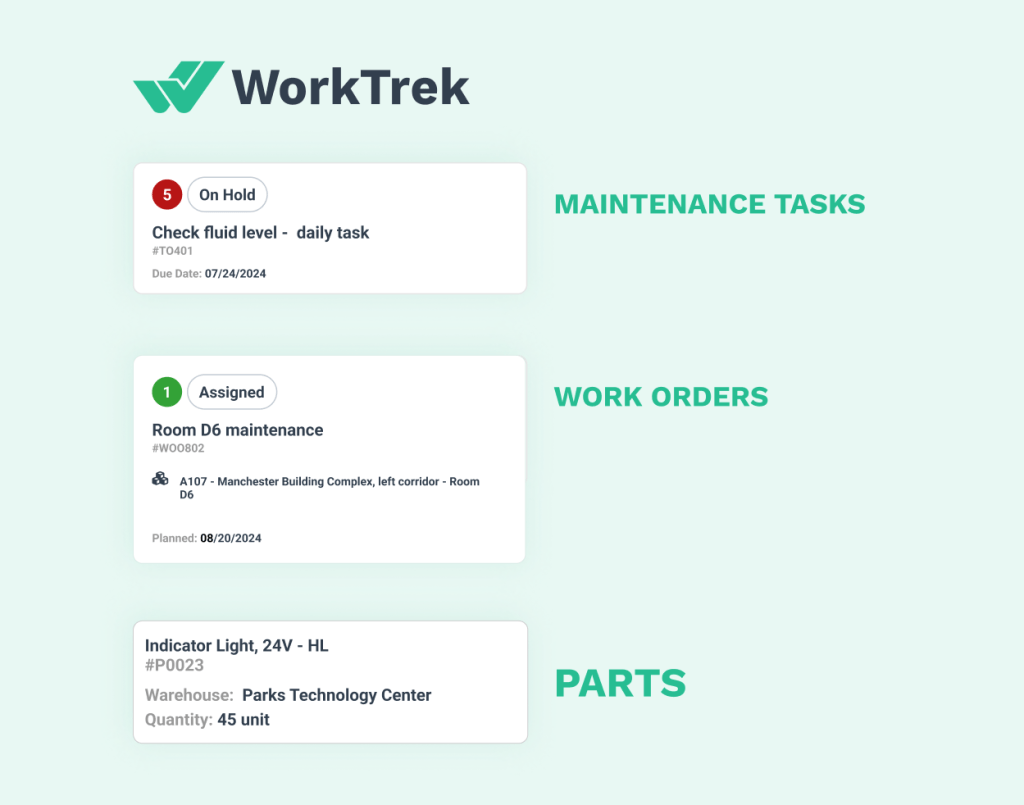
For preventive maintenance, the CMMS can easily manage calendar-based schedules.
Teams can set up recurring tasks like “change oil filter every 60 days” or “inspect belts monthly,” and have them assigned to maintenance teams.
Key CMMS features for preventive work:
- Automated work order generation
- Asset history tracking
- Parts inventory management
- Labor time recording
Predictive maintenance demands more advanced capabilities. The maintenance software must handle sensor data feeds and generate alerts when readings exceed normal ranges.
Advanced CMMS requirements:
- Real-time data integration
- Dashboard analytics
- Mobile access for technicians
- Custom reporting tools
Role of Sensors and Condition Monitoring
Condition monitoring can transform raw sensor data into actionable maintenance decisions.
By implementing temperature sensors, vibration monitors, and oil analysis tools, you can get continuous equipment health updates.
Common sensor types:
- Vibration sensors – Detect bearing wear and alignment issues
- Temperature probes – Monitor motor heat and friction
- Pressure gauges – Track hydraulic and pneumatic systems
- Oil analysis kits – Check contamination levels
Vibration analysis stands out as one of the most valuable predictive tools. These sensors detect early signs of mechanical problems weeks before equipment fails.
The data flows from sensors to maintenance software platforms that analyze patterns. Machine learning algorithms compare current readings to historical baselines.
Data analysis requirements:
- Baseline establishment period
- Alert threshold settings
- Pattern recognition software
- Historical trend storage
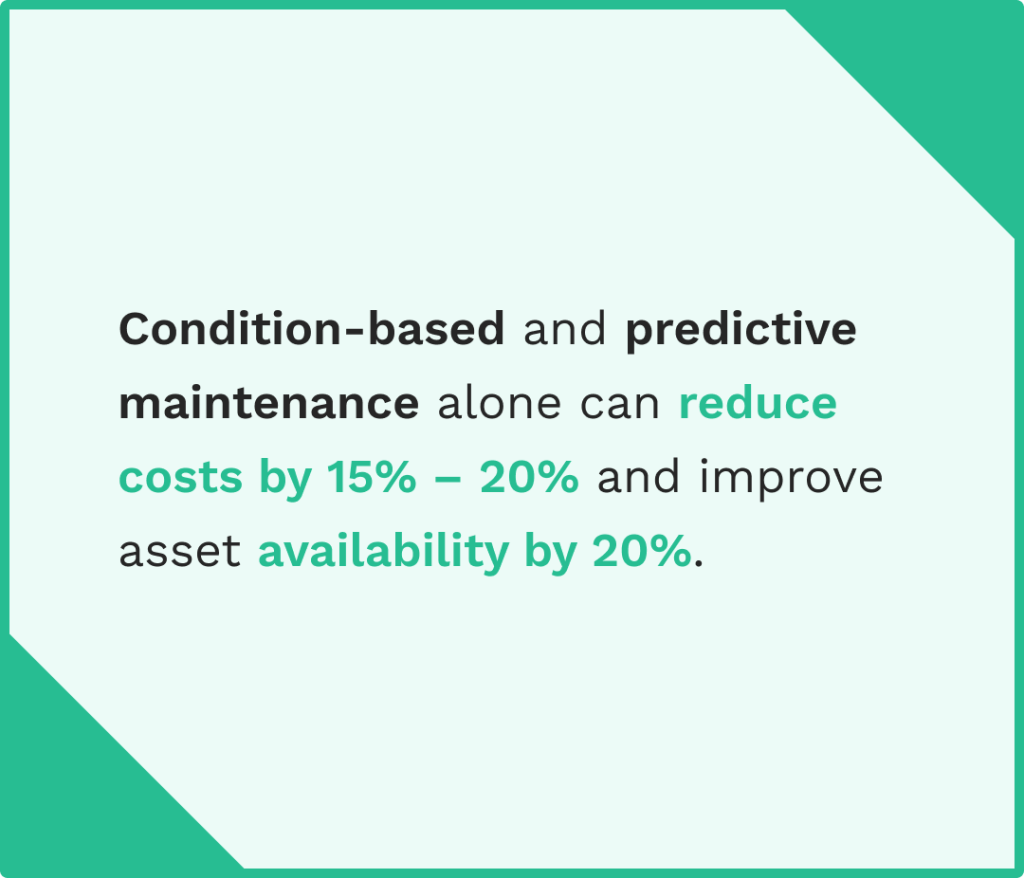
Installation costs can vary based on equipment complexity. For example, a simple temperature sensor might cost hundreds of dollars, while more complex sensors like vibration monitors might cost thousands.
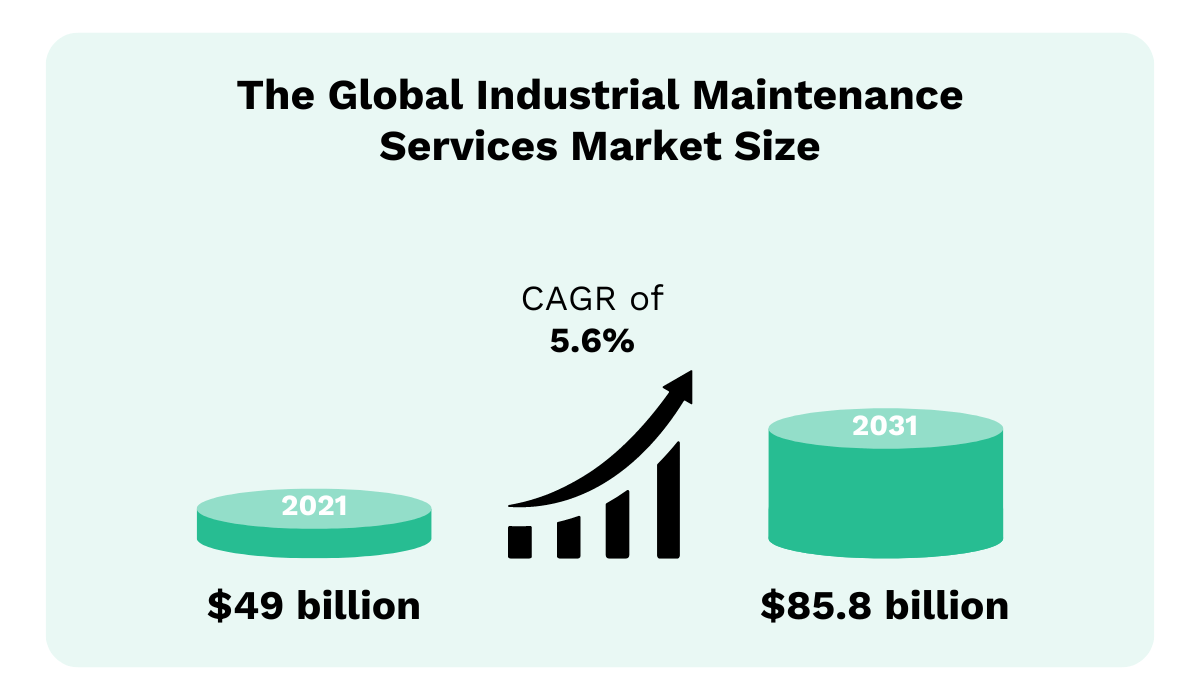
Training and Team Readiness
Maintenance teams need to learn different skills for each approach.
When considering preventive maintenance, your team needs to be efficient in following procedures and accurately documenting completed tasks.
Preventive maintenance skills:
- Following maintenance schedules
- Basic troubleshooting techniques
- Parts replacement procedures
- Safety protocol compliance
Predictive maintenance, on the other hand, demands higher technical knowledge. Maintenance technicians must be skilled at interpreting sensor data and recognizing equipment failure patterns.
Predictive maintenance training needs:
- Data analysis fundamentals
- Sensor technology basics
- Condition monitoring techniques
- Predictive insights interpretation
If you don’t have a plan in place, it is much easier to start with preventive methods while building predictive capabilities.
This approach lets teams learn gradually without overwhelming existing workflows.
Training programs should cover both technical skills and software operation.
Implementation timeline considerations:
- 3-6 months for basic preventive setup
- 12-18 months for full predictive deployment
- Ongoing education for new technologies
- Regular refresher training sessions
Success depends on management support and clear performance metrics. Teams perform better when they understand how their work impacts overall business goals.
Impact on Operations and Asset Lifespan
Both maintenance strategies significantly affect how equipment operates and how long it lasts. The timing and approach of each method create different outcomes for machine availability and overall equipment effectiveness.
Reducing Machine Downtime
Preventive maintenance can reduce unplanned downtime by following set schedules.
With regular equipment service intervals, teams can identify and address problems before they lead to breakdowns.
This approach will require planned downtime for routine tasks.
There is, however, a downside to preventive maintenance. Since this is set to a fixed schedule, sometimes equipment is serviced when it is not necessary. This can lead to increased labor and material costs.
Preventive maintenance involves planned downtime for service at regular intervals, which can be scheduled during non-peak hours.
A predictive maintenance program takes a different approach as part of maintenance management. It constantly monitors equipment and only schedules work when data indicates a problem is imminent.
This method minimizes unplanned downtime by performing maintenance just-in-time, before failure occurs.
The result is less total downtime.
Equipment runs longer between maintenance tasks because work only happens when truly needed, leading to cost savings.
Improving Asset Performance
Preventive maintenance can improve equipment performance.
Scheduled tasks like lubrication, cleaning, and part replacement maintain steady performance. This is no different than changing the oil in your car every 5000 miles.
However, some assets might get serviced too early or too late compared to their actual condition.
Predictive maintenance can optimize asset performance by using real-time data. Sensors track vibration, temperature, and other factors that affect how equipment works.
Predictive maintenance keeps machines in optimal condition and reduces emergency repairs. This type of preventative maintenance strategy is ideal for high-value and critical equipment.
Conclusion
The choice between preventive and predictive maintenance isn’t an either-or decision.
While preventive maintenance offers simplicity and immediate implementation benefits, predictive maintenance provides data-driven precision that optimizes resource allocation.
Innovative organizations recognize that each approach serves different equipment types and operational needs. Simple assets benefit from scheduled preventive care, while critical, high-value equipment justifies investments in predictive technology.
The most successful maintenance strategies combine both approaches, starting with preventive maintenance as a foundation while gradually incorporating predictive capabilities where they deliver the most significant value.
This hybrid approach maximizes equipment reliability, minimizes costs, and positions companies for long-term operational excellence.




